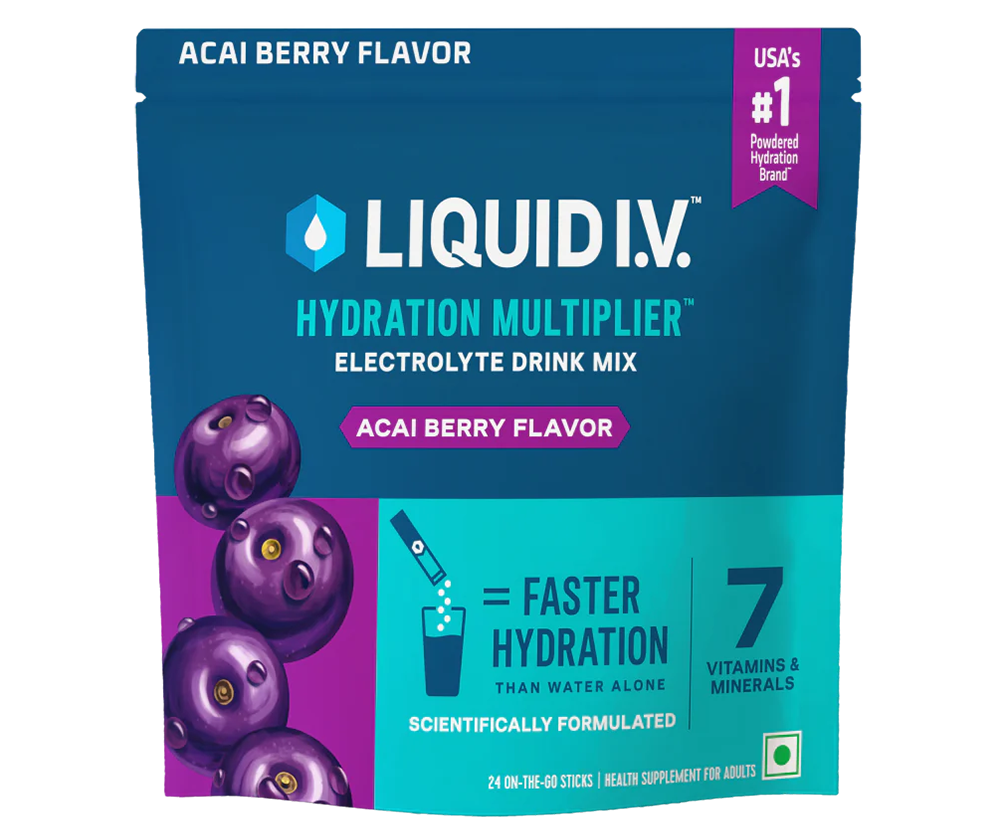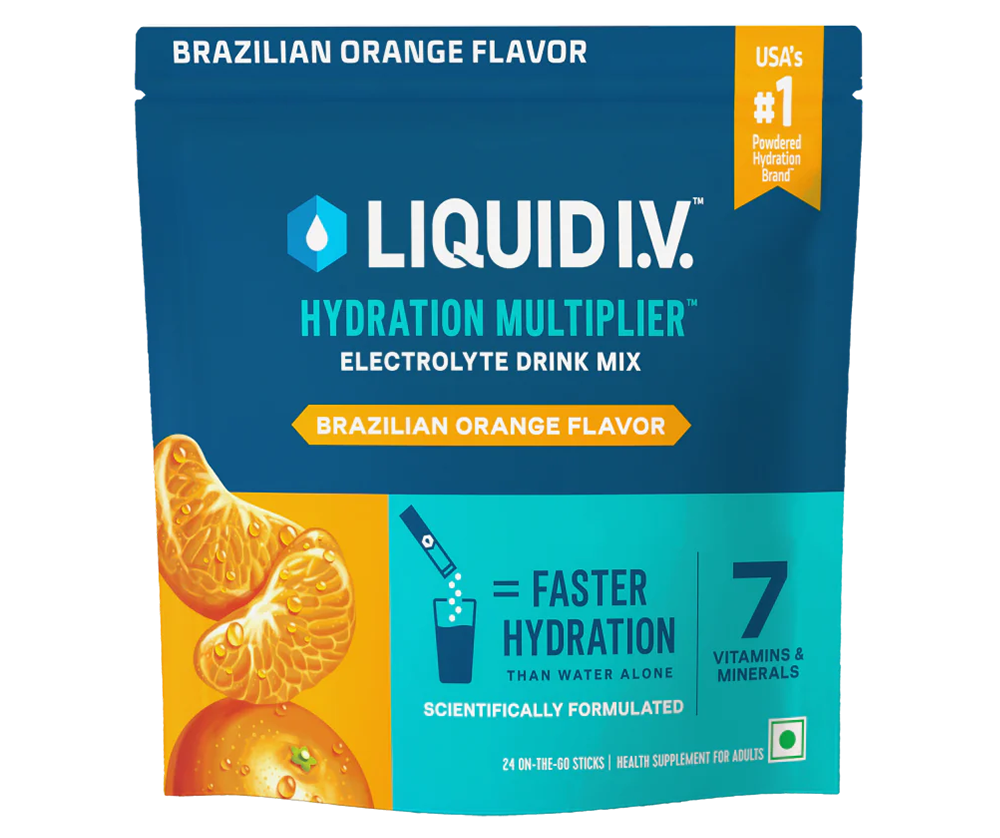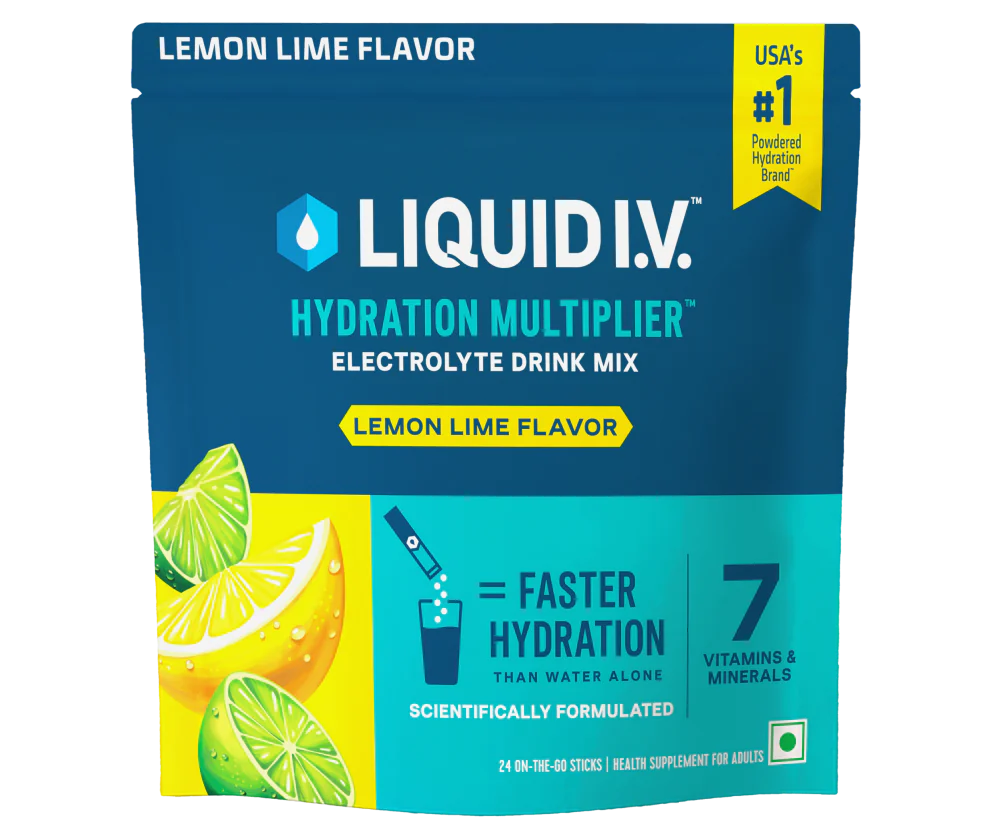6 Unusual Signs Of Dehydration
Introduction
The body has multiple ways to let us know what is going on inside, and that's no different when it comes to hydration and dehydration levels. Feeling thirsty and having a dry throat would mean dehydration is setting in!
Let's explore six unusual signs of dehydration which help you stay hydrated and healthy.
What is dehydration?
Dehydration occurs when the body loses more water and electrolytes than it has taken in. There are multiple reasons for this; it could happen due to strenuous workouts, not hydrating after excessive alcohol consumption, or simply not consuming adequate water throughout the day. This deficiency of fluid in the body impacts several normal processes, such as the regulation of thirst, mental clarity, and general physical endurance. It may cause headaches, dizziness, and muscle soreness, among other symptoms [1].
Before we understand dehydration, let's look at hydration first. Hydration is not just about drinking water; the body must have the right balance of electrolytes to make it into a 'fluid' for optimal hydration.
60% of your body is water. It is present both inside and outside your cells. Electrolytes are mainly ions (charged species) that help maintain the level of water both inside and outside the cell. They are obtained from minerals like sodium, potassium, magnesium, etc. Effective hydration happens when the body absorbs, retains, and distributes water efficiently. Electrolytes play a significant role in ensuring this process happens seamlessly. Now that we know how important hydration is, let's explore what happens if one DOES NOT hydrate correctly.
6 Unusual Signs of Dehydration
Let’s explore some lesser-known symptoms that could signal your body needs more water.
1. Parched Mouth, Funky Breath
The parched mouth does not come as a surprise. The sensation of a dry mouth is a sign of dehydration. Drinking water flushes the excess bacteria out of your mouth. This ensures fewer of these little bad breath-causing buggers stay in our mouths [2].
2. Your skin can talk, too
Skin is the largest organ in the body. It gives multiple indications of what is happening inside. Radiant, bouncy skin is a sign of a well-hydrated body, and it bounces back when pinched or stretched. Poorly hydrated skin will have less elasticity and take longer to bounce back, which may indicate dehydration in adults [3]. Monitoring your hydration levels using this simple exercise always helps!
3. Ouch, Ouch, Ouch!
Ever go about your day with sore muscles? Muscles use a significant amount of calcium ions (and other ions) for their regular functions. If we are not well hydrated, the delivery of these ions becomes restricted, causing muscle soreness, mainly during exercise [4]. Whether or not one has an active lifestyle, hydrating correctly is essential to keep your muscles working properly.
4. As I am suffering from a fever
While dehydration may not always cause fever, fever can cause dehydration as the body temperature rises. Higher body temperature means more sweating and higher fluid loss [5].
5. Snack Attack, quite literally!
Ever wonder why our sweat tastes salty? It is because, along with releasing water, a small amount of salt also comes out. This water and salt loss induces a craving for salty food [6]. Also, have you noticed when we eat, we often feel thirsty? This happens because the body needs to replace the fluids used for swallowing (like saliva) and digestion (like water that goes into our stomach). Eating salty food makes our blood concentrate, so we need water to balance it.
6. Was Harry Potter just dehydrated?
Had Voldemort not made Harry a Horcrux (spoiler alert), we suspect his splitting headaches were caused by dehydration. When the body is dehydrated, some of the fluid is pulled from the brain, which causes a slight "shrinkage" of the brain tissue from its surrounding protective layers. Unfortunately, this adds pressure on those pain-sensitive layers, causing headaches [7].
Tips on Staying Hydrated
Now that we know the bad effects of improper hydration let's look at how we can make hydration easy and a seamless part of our everyday routine:
- Sip your water: Aim to drink at least 2.7 - 3.7 litres of water daily. Once a day, you can also make it fun by adding electrolytes for a quicker boost. Hydration made into a tasty treat? Yes, please!
- Monitor Urine Color: One can also check hydration by looking at the colour of the urine. The urine must be pale yellow. The darker the urine, the lower the amount of water in the body. If it appears darker than usual, it's time to hydrate NOW! Adding the right balance of electrolytes to water can help rehydrate faster.
- Include foods that are naturally hydrating: Many fruits and veggies can also hydrate us naturally—watermelon, cucumbers, citruses, and even strawberries are excellent choices. Adding a few pieces of chopped cucumbers, watermelon, or a spritz of lemon juice can add to your good hydration routine.
- Reminders and alarms: Let's face it: we sometimes forget to drink water in our pursuits. Using phone alarms or reminders can be useful to ensure we consume water at regular intervals.
- Reducing caffeine and alcohol: Coffee and alcohol dehydrate! They should be consumed in moderation.
- Carry your bottle with you: Having a bottle of water in hand at all times becomes a silent but physical reminder to drink water from it—in sight, in mind!
Add some electrolytes for times when life gets better of you—like when travelling, after a strenuous workout, or simply on days when you have missed out on drinking enough water. Rapidly rehydrate by adding an optimal balance of electrolytes to your water!
Conclusion
The body runs on energy, but hydration is one of those X factors that bring vitality to the body. Knowing when the body is optimally hydrated and identifying when it is deficient in fluids is extremely important for overall health. Use these simple tips and tricks for yourself and your loved ones. Prevention is always better than cure. Good hydration can be effortless and sometimes tasty, too! Make it a part of your lifestyle. Simple steps like taking our bottles with us and carrying travel-friendly sachets of electrolytes make it easy for us to maintain good health.
It's that simple!
FAQs on Dehydration
1. How do I know if I am dehydrated?
The first sign is a dry throat. Other advanced signs can include a parched throat, slight dizziness, muscle soreness, headache, and dark urine.
2. What is the best drink for dehydration?
Water! But it would be better to consume electrolyte water - this helps in faster hydration. Other popular hydrating drinks are tender coconut water and lemon juice.
3. Which fruit is best for dehydration?
Watermelons contain the highest amount of water at 92%. Other strong contenders are strawberries (91%), cantaloupes (90%), and oranges (88%).Cucumbers are veggies with the highest amount of water at 95-96%.
4. What are the side effects of dehydration?
Dehydration can cause headaches, muscle cramps, skin tightness and dullness, weakness, and brain fog.
Stay hydrated, stay healthy!





